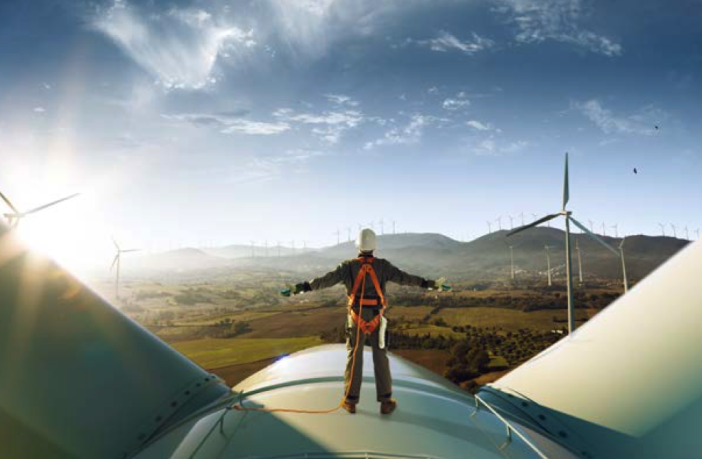- The Life After Coal campaign (comprising groundWork, Friends of the Earth, South Africa; Earthlife Africa; and the Centre for Environmental Rights) welcomes the release of South Africa’s Investment Plan for the Just Energy Transition (JET) for public discussion and input.
- Released by the President on the eve of COP27, the Plan signals a decisive move away from coal-fired power towards cleaner alternatives through a Just Transition. Read more
The Life After Coal campaign regards the managed implementation of a Just Transition as urgent. “We need clean, cheap renewable energy to end the loadshedding caused by our failing coal fleet, and to address the energy poverty that is hampering social justice and development for all. It also needs to respond to the climate crisis that is steadily growing and threatening to undo decades of development gains,” says Earthlife Africa Director Makoma Lekalakala. “What we do over the next 3-5 years will determine whether South Africa will move forward, or fall behind in the global transition from fossil fuels.”
Cost of the Just Transition
The Investment Plan indicates that South Africa needs at least R1.5 trillion to realise the JET over the next 5 years. As pointed out by the President on 4 November 2022, the $8.5 billion offered by the United Kingdom, the United States of America, the European Union, France and Germany (the “International Partners’ Group”, or IPG) at COP26, leaves a substantial funding gap.
“The clear message being sent is that South Africa’s plan is ambitious, and that we need new, additional funding at scale in order to realise such ambition,” says Leanne Govindsamy, head of the Corporate Accountability programme at the Centre for Environmental Rights.
Need for a greater proportion grant finance
Although the details of the deals do not appear from the Investment Plan, the President made it clear that the offers from the IPG contain a woefully insufficient grant finance proportion (as opposed to loans), and indicated that he would put forward a counter-proposal with increased grant support. “This is critical for the social outcomes that will make the transition truly just, since these outcomes cannot be funded with loan finance, even if concessional,” says Govindsamy.
“The Just Transition is a unique opportunity for transformative economic, environmental and social change that puts people first, and that brings an end to energy poverty in South Africa. We need to make sure that the very practical examples and demands of local people in the affected areas, and women in particular, are integrated and embedded in the Plan that can then support government efforts to negotiate a larger grant proportion of finance in the transactions that respond to the JETP Investment Plan,“ says Bobby Peek, director of groundWork.
“The Plan does not yet reflect the priorities of local people directly affected by the transition. Inputs from communities living next to closed oil refineries and coal-fired power stations and mines, including workers and ex-workers, can enrich the Investment Plan with critical local knowledge,” says Thomas Mnguni, coal campaigner for environmental justice group groundWork.
Investment Plan and South Africa’s emissions reductions
The Investment Plan commits to enabling South Africa’s greenhouse gas emissions to remain within its 2021 NDC Update range, namely 350 to 420 megatonnes carbon dioxide equivalent (MtCO2-eq) by 2030. However, the 420 upper limit of the range is consistent with a 2 degree pathway, while only the lower limit of 350 is consistent with a 1.5 degree pathway.
“Studies show that South Africa is warming at double the global average rate, so we have much to lose from the additional 0.5 degree global average warming in a 2 degree pathway,” says Brandon Abdinor, climate advocacy lawyer at the Centre for Environmental Rights. “South Africa still needs to do better with its emissions reductions than is envisaged in the Investment Plan.”
The priority sectors
The Investment Plan targets three priority sectors, namely the electricity sector, electric vehicles and green hydrogen. We welcome the fact that most of the funding in the Investment Plan is allocated to the decarbonisation of the electricity sector.
“However, the vehicle manufacturing sector and the green hydrogen sector are big profitable business sectors involving big corporations, some of whom are also some of our biggest carbon emitters. What is not clear is whether these sectors in fact need precious concessionary climate finance. Will Sasol, a listed company with a market capitalisation of close to $11bn and our no. 2 carbon emitter, now be a beneficiary of funding under the Investment Plan? If the market supports green hydrogen, it should be feasible for finance to be raised in the market by such players,” says Melissa Fourie, Executive Director of the Centre for Environmental Rights.
“While we welcome support for the transformation of the vehicle manufacturing sector from internal combustion engines to electric vehicles, we also need to see meaningful investment in safe, affordable, mass, electrified public transport that is directly linked to enabling people’s participation in the economy,” says Peek.
Distributive, restorative and procedural justice
The Just Transition Framework developed by the Presidential Climate Commission and adopted by Cabinet expressly endorses principles of distributive, restorative and procedural justice as critical to the Just Transition. With regards to the first two aspects, we need assurances that ordinary people in the coal affected areas and around the oil refineries, many of whom have been breathing toxic air for decades, and people living in climate vulnerable areas, will benefit directly from this Investment Plan.
“Procedural justice means ‘Nothing about us without us’,” says Mnguni. “If affected people had given direct input into the Investment Plan, we would have seen these benefits in the Plan. We want a proper consultation process with communities on this Plan.”
Author: Bryan Groenendaal
Source: Life After Coal















